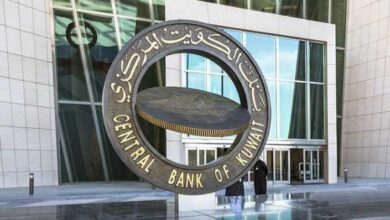Global economic growth to slow further in 2024

THE TIMES KUWAIT REPORT
Hampered by tight monetary policy, restrictive financial conditions, and feeble global trade and investment, the global economy in 2024 could witness the third consecutive year of slow economic growth, and the slowest half-decade growth in 30 years, said the World Bank in its latest ‘Global Economic Prospects – January 2024’ report.
In his foreword to the report, the World Bank Group’s Chief Economist and Senior Vice President Indermit Gill noted that by the end of 2024, as the world nears the mid-way point in a decade that was expected to be a positively transformative one, growth will remain feeble. This would leave many developing countries, especially the poorest, stuck in a trap: with paralyzing levels of debt and tenuous access to food for nearly one out of every three people living there.
The report indicated that instead of the 2020s being the decade when extreme poverty was to be extinguished, when major communicable diseases were to be eradicated, and when greenhouse-gas emissions were to be cut nearly in half, the world is headed for the weakest economic-growth performance of any half-decade since the 1990s. One out of every four developing economies is expected to be poorer by the end of 2024 than it was before the pandemic.
Most economies in the world, advanced as well as developing, are set to grow more slowly in 2024 and 2025 than they did in the decade before COVID-19. Global growth is expected to slow from 2.6 percent in 2023 to 2.4 percent in 2024 before ticking up to 2.7 percent in 2025.
Those rates, however, would still be far below the 3.1 percent average of the 2010s. Global trade growth in 2024 is expected to be only half the average in the decade before the pandemic, and per capita investment growth in 2023 and 2024 is expected to average just 3.7 percent, barely half the average of the previous two decades.
In advanced economies, growth is set to slow to 1.2 percent this year from 1.5 percent in 2023 on continued high interest rates and softening labor market. Meanwhile, in developing economies the medium-term outlook appears bleak due to slowing growth in most major economies and sluggish global trade. Constrained by the tightest financial conditions in decades and global interest rates that remain stuck at four-decade highs, developing economies, especially those with poor credit ratings, face steep borrowing costs.
In low-income countries, which witnessed a disappointing performance last year, growth could reach 5.5 percent in 2024, but this would still be weaker than previously expected. By the end of 2024, people in nearly one out of every four developing countries and about 40 percent of low-income countries will still be poorer than they were in 2019.
In low-income countries, which witnessed a disappointing performance last year, growth could reach 5.5 percent in 2024, but this would still be weaker than previously expected. By the end of 2024, people in about one out of every four developing countries and about 40 percent of low-income countries will still be poorer than they were in 2019.
In the Middle-East and North Africa (MENA) region, assuming the ongoing conflict in the area does not escalate, growth is expected to pick up to 3.5 percent in
2024 and 2025 — 0.2 and 0.5 percentage point higher, respectively, than previously projected, and significantly higher than the 1.9 percent growth registered in 2023. But this growth would vary across the region, being more visible in the oil exporting countries and less so in other places. Growth in Gulf Cooperation Council (GCC) countries is forecast to rise to 3.6 percent in 2024 and 3.8 percent in 2025.
Among the GCC states, growth would be slowest in Kuwait with the country’s economy set to experience a growth of 2.6 percent in 2024 before ticking a point higher to 2.7 percent in 2025. Although this marks a significant increase compared to the 0.8 percent growth expected in 2023, it is still well below the regional average. Saudi Arabia is anticipated to achieve an economic growth rate of 4.1 percent in 2024 and 4.2 percent in 2025, while the UAE’s economy is expected to grow by 3.7 percent and 3.8 percent during the same periods. Bahrain, Oman, and Qatar, are also expected to see positive economic growth.
The predicted GDP growth for Kuwait in the 2024-25 period is based on several factors,including higher oil prices and production, stronger liquidity ratios, robust non-oil activity, and sound monetary policies. Additionally, the formation of a new government in Kuwait, which is expected to focus on economic development and major projects, supports the optimistic outlook.
However, the ongoing conflict in the Middle-East and the likelihood of its spillover to neighboring countries adds an element of uncertainty to growth forecasts for the Middle-East and North Africa (MENA) region. Additional risks to regional growth expectations include geopolitical challenges, fiscal policy uncertainties,and exposure to natural disasters and climate-change related repercussions.
In particular, volatile fiscal policies reduce output growth by exacerbating macroeconomic instability. Fiscal volatility is intimately related to procyclic policies. [To refresh Economics 101: Economic indicators such as Consumer Price Index (CPI), Unemployment figures, or Gross Domestic Product (GDP) can have one of three different relationships to the economy — Countercyclical (indicator and economy move in opposite directions); acyclic (indicator has no relevance to the state of the economy); or procyclic (indicator and economy move in tandem; growing when the economy grows and declining when the economy declines.]
Studies show that fiscal policy in developed countries is either acyclical, or countercyclical, while in developing countries it tends to be more procyclical. For example, in many developed countries, governments tend to increase public spending or cut taxes during an economic slowdown, thereby reducing economic fluctuations and ensuring macroeconomic stability. In contrast, many developing countries follow a procyclical fiscal policy — increased spending during good times and cutting back when the economy slows down.
Developing countries often follow procyclical policies due to limited access to financing during economic slowdowns, or from profligacy during economic upswings that deplete state treasuries. This places governments in the unenviable position of raising taxes, cutting spending or shelving productive projects during economic downturns.
Also, in some countries, governments may not be able to withstand political pressure to open the purse-strings during economic upturns, leading to fiscal imprudence and non-productive expenditures. Procyclical fiscal policies can be detrimental to economic growth, both in the short- and long-term. It increases fiscal volatility and negatively impacts macroeconomic stability, in addition to austerity measures during slowdowns affecting the most vulnerable groups in society.
The World Bank report points out that commodity exporting economies in the developing world are especially prone to debilitating boom-and-bust cycles and procyclical fiscal policies that drag down growth potential. The Bank noted that these countries could benefit by enacting strong fiscal policy frameworks to regulate government spending, adopting flexible exchange-rate systems, and avoiding restrictions on international movements of capital, among others.
In Kuwait, the hope among many people is that with an eminent economist at the helm as premier, and an imminent new cabinet, the country could witness a new era of economic revival that enables the country to leverage its ample fiscal reserves and human resources to grow sustainably and to realize its full economic, social, and political potential in the years ahead.











